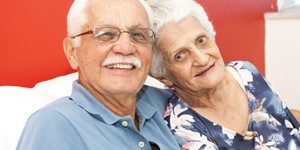
Part of the Transforming Life as We Age Special Report
It’s a scary and depressing image of aging: If you are sick or poor and over 65, it’s your own fault because you didn’t do the right things when you were younger.
This is a commonly held view of old age in the United States, and the nation’s leading aging organizations are now on a fierce mission to change it through a project known as Reframing Aging.
If they fail, they fear, political support in Washington and across the nation will erode for federal spending on Social Security, Medicare, senior centers, meals on wheels and other programs for the 14 percent of Americans who are 65 and older (a number expected to rise to 21 percent by 2040).
“We really, really are invested in this issue,” Bob Blancato, the new board chair of the American Society on Aging (ASA) and a Next Avenue writer, told a special session of the ASA’s annual meeting in Washington, D.C. on March 22, 2016. “We must be vigilant that ageism does not get into the 2016 [election] race.”
An Underappreciated, Unrecognized Reality
Most older people are healthy and independent, but this reality often is “underappreciated and unrecognized by the vast majority of the public,” said James Appleby, executive director and chief executive officer of the Gerontological Society of America (GSA).
FrameWorks found many Americans started by talking about an “ideal” image of aging but reverted to their “real” image of deterioration and helplessness.
The public’s dark view of aging was uncovered by research from the FrameWorks Institute, a nonpartisan Washington, D.C.-based social issues group hired by AARP and a group of foundations. When FrameWorks interviewed Americans, it found that many started by talking about an “ideal” image of aging (happy, healthy and financially comfortable) but ultimately reverted to their “real” image, focused on deterioration and helplessness.
“While Americans have, and are able to hold, an idealized picture of aging in their minds, this bubble is constantly and predictably perforated by what people see as a much more negative and inevitable process of deterioration,” FrameWorks said in its research. Aging, FrameWorks added, “is understood as an inherently negative process about which little can be done. The sense of an ideal that will never be achieved serves only to further cement the already deep sense of fatalism that characterizes public thinking on aging.”
FrameWorks gave a detailed description of the relentlessly negative view of aging it uncovered at the GSA’s annual meeting last November in Orlando, Fla. The message was alarming enough to prompt two summit meetings of aging groups this year at the GSA’s Washington headquarters, with top officials from eight aging organizations ranging from AARP to the National Council on Aging. And the issue was front and center at the ASA’s Aging in America conference.
The Ageism Phenomenon
“I wouldn’t say that ageism, or negative impressions of older people in general, began at any particular point, but there’s absolutely no question it is a phenomenon that exists,” said Nancy LeaMond, executive vice president and chief advocacy and engagement officer at AARP.
The aging advocacy groups want to change the public’s view that: aging means deterioration, is an individual problem and that nothing can be done about it. To do so, they plan to launch a PR campaign persuading Americans that aging cannot only be positive, but that it’s a common societal and political necessity. If they succeed, these groups hope, voters — especially Millennials — will become convinced that programs for the aging deserve support.
“Everybody is eager for the tools to improve their communications as effectively as possible,” said Laura Robbins, the consulting director for the Reframing Aging project.
How to Change Perceptions and Minds
FrameWorks says the advocacy groups need a makeover of their public relations, advertising and marketing strategies. Aging, FrameWorks says, must be “understood as both a personal and a shared resource and opportunity, and so that older Americans are viewed as central rather than marginal participants in our collective life as a nation.” Instead of thinking of the aging population as deteriorating, incompetent and dependent, the public needs to view older Americans as living lives with opportunities and challenges.
By November, the Reframing Aging groups plan to be armed with a toolkit offering new ways to talk about aging — both internally and with the general public.
The toolkit is a first step in an ambitious campaign. “This is an ongoing project; we are not going to produce this one report and say we are done,” said Vanessa Sink, public affairs manager for the National Council on Aging (NCOA). “We have to work together as a collective about what we are saying and how we say it.”
But it may be a long and uphill struggle, the advocates say. Foundations and charities spend less than 2 percent of their funding on programs for aging research and services, a figure that has been frozen for 20 years, John Feather, CEO of Grantmakers in Aging told the ASA meeting. “Americans don’t want to think about aging.”
The coalition of Reframing Aging groups in addition to the AARP, ASA, and GSA, and NCOA includes the American Federation for Aging Research, American Geriatrics Society, Grantmakers in Aging and the National Hispanic Council on Aging. Financial backing for the research is from AARP and foundations including the Archstone Foundation, Atlantic Philanthropies, John A. Hartford Foundation, Fan Fox and Leslie R. Samuels Foundation, Retirement Research Foundation and Rose Community Foundation.
This article was written with support from the Journalists in Aging Fellowships, a program of New America Media and the Gerontological Society of America, sponsored by the SCAN Foundation.






